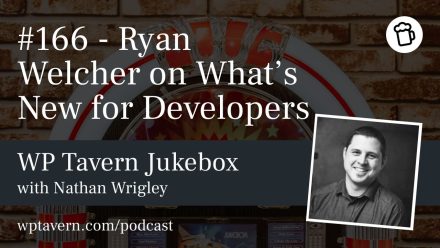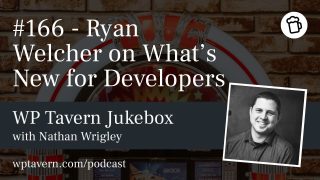Nathan Wrigley interviews Bud Kraus at WordCamp US 2025 about living and working with macular degeneration and how it shapes his approach to teaching and using WordPress.
Bud was diagnosed with macular degeneration at 37. The condition destroyed his central vision in both eyes, making it hard to see straight ahead, recognise faces, read fine print, or drive. His peripheral vision remains intact, so he navigates without a cane or guide dog and continues to live and work independently. Over time Bud moved from grief to acceptance and now frames many aspects of his situation as sources of opportunity and perspective.
Practical adaptations
Bud relies on a set of practical adaptations rather than full-screen reader systems. On macOS he increases icon and text sizes, uses low display resolutions (e.g., 1024×768) to make UI elements larger, and uses built-in text-to-speech to have selected text read aloud. He zooms in and out of pages frequently and uses touch and memory to compensate. New device setup can be awkward because initial configuration screens are tiny and often lack audio, which presents a real accessibility gap.
When teaching or presenting, Bud prepares meticulously. He can’t “wing it” — he pre-plans lessons, memorises slide order and key ideas, and leverages pattern recognition from years of coding and teaching. That preparation, combined with screen zoom and text-to-speech, allows him to teach WordPress, code, and produce tutorials and podcasts like Seriously, Bud?.
Working with WordPress and tools
Bud does not typically build websites for clients as his main focus, but he has worked across WordPress editing and publishing. He prefers writing content in a simple editor with large type (TextEdit on macOS), then copying into the WordPress editor rather than composing directly in Gutenberg. He finds dense UIs and too much on-screen information difficult to use. If interfaces change a lot, he has to relearn where things are, which is time-consuming and disruptive. For visual tasks like colour choices he asks others for help.
On Gutenberg and page builders, Bud says accessibility is complex and he’s not an expert, but from a usability perspective the block editor can feel complicated. He also uses Elementor and finds it, in some cases, easier. His main complaint is clutter and unclear interfaces rather than his vision alone — many people find overly complex UIs frustrating.
Assistive technologies
Bud does not use JAWS or other complex screen readers. He finds built-in macOS accessibility features sufficient and prefers to avoid more complicated assistive systems unless necessary. He stresses that vision loss is a spectrum: solutions that work for him may not suit others. Accessibility decisions and testing need to recognise wide individual variation.
Events and presentations
At conferences like WordCamp, Bud attends talks but often can’t see presentation screens from a distance. He listens closely and sometimes takes photos of slides for reference. He’s been giving a talk titled “Using low vision as my tool to help me teach WordPress,” which draws on his teaching experience and the adaptations he’s developed. For presenting, he memorises structure and content so he doesn’t rely on reading slides. A side effect of not seeing audience faces is that he experiences less stage fright.
Career, teaching and AI
Bud has taught web design and accessibility since the late 1990s, including a course called Accessible Web Design. He no longer focuses his career on accessibility testing or consulting, preferring broader teaching and content work. He writes tutorials and technical articles for WordPress businesses and has a podcast, Seriously, Bud?, which has attracted sponsorships over time. He sees AI as a career extender: it helps him write, code, and tackle more technically advanced topics than he could easily manage before, enabling him to keep learning and contributing.
Views on accessibility
Bud believes accessibility is essential because inaccessible interfaces can exclude potential customers. If a site or product is too hard to use, he’ll abandon it or find an alternative. He emphasises designing for the broadest range of people and devices but notes the challenge: accessibility is idiosyncratic and hard to fully standardise. He doesn’t attend accessibility-specific conferences regularly and explains that living with a disability doesn’t obligate someone to specialise in accessibility professionally.
Personal perspective
Bud reframes his condition as both a challenge and a source of unexpected benefits: it sharpened his teaching approach, encouraged preparation and pattern-based thinking, and expanded his social and professional world through podcasts and conferences. He values being part of the WordPress community and finds the work meaningful, particularly as it keeps him engaged and learning.
For listeners
Bud’s talk at WordCamp US and related content are recorded and often shared via WordPress.tv and other channels. His practical tips — over-index on preparation, use system zoom and text-to-speech, draft in a large-type editor and paste into WordPress, and get help with colour choices — are useful for anyone designing with accessibility in mind.
The full interview covers more anecdotes and practical examples from Bud’s work and life. If you want to follow his presentation, search for his WordCamp US 2025 talk titled “Using low vision as my tool to help me teach WordPress.”




